Deciding how to choose your new van that will be your future home or adventure rig is fun and exciting, but can also be overwhelming.
There are so many brands, types, and styles to consider, how do you decide which van to buy? Our journey to choose a new van took over a year, and we couldn’t be happier with our choice. Whether you’re a weekend warrior, a full-timer, or something in between, here’s a summary of the details we used to help us decide.
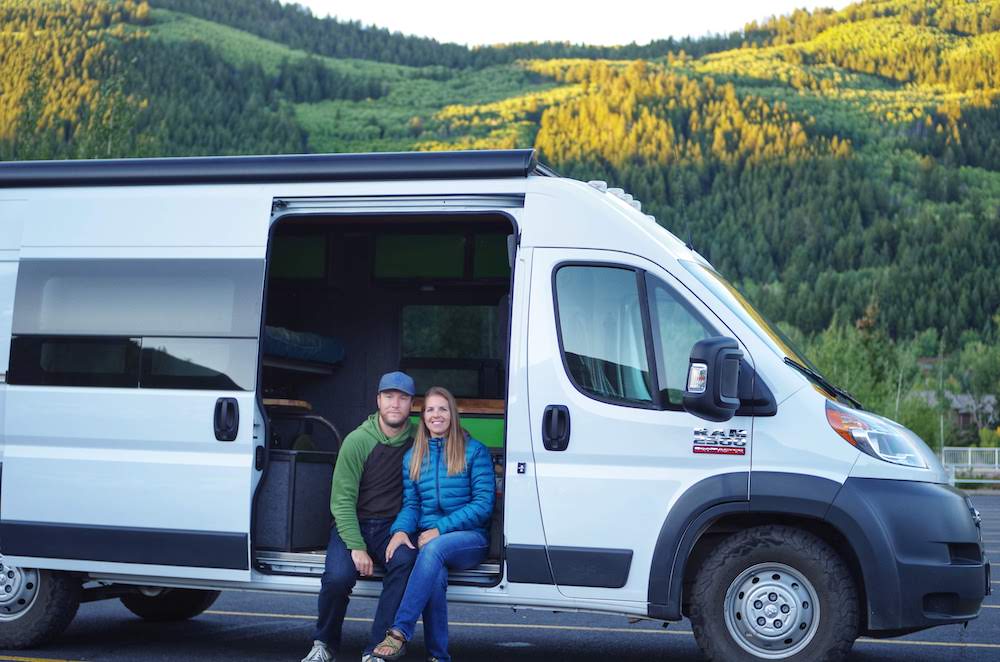
The Research Phase
This stage took us at least a year, but it doesn’t need to take you that long. We spent hours doing research, digging through forums, and cataloging pros and cons of each option such as vehicle size (interior and exterior dimensions), standard options, and price, putting together a spreadsheet for comparison. We went back on forth on how much to spend, whether we wanted new or used, if we should do the build ourselves vs. hire someone… the options are seemingly endless. The biggest factor for us to consider was that we knew were going to live in our van full-time. Even if that is not your goal, you may still benefit from the logic we used to narrow down our choices and make your final decision.
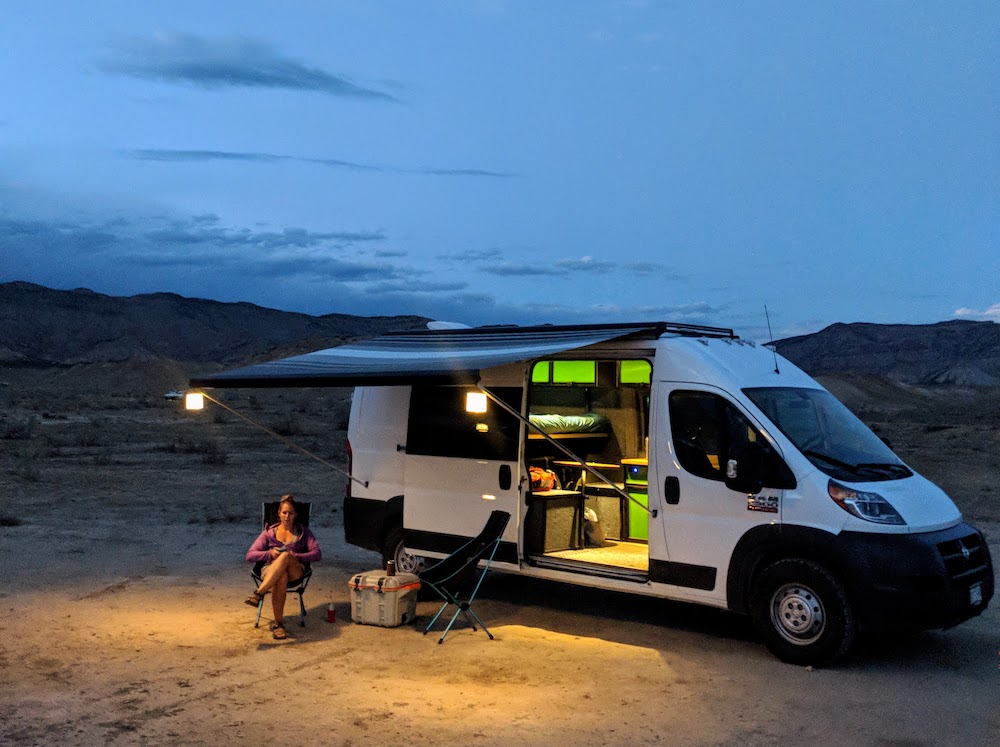
Decide on a Budget
After you’ve read so much information about vans that it hurts your brain, the next step is to decide how much you want to spend on your new adventure home on wheels. Hopefully, your research has given you an idea of how much your new van and the conversion will cost, as well as the huge variety of options there are available to you. As you do your research, make a list of features that are important to you as well as how much they will cost, including big-ticket items for your conversion. Your budget will likely help you figure out if you can buy a new or used van.
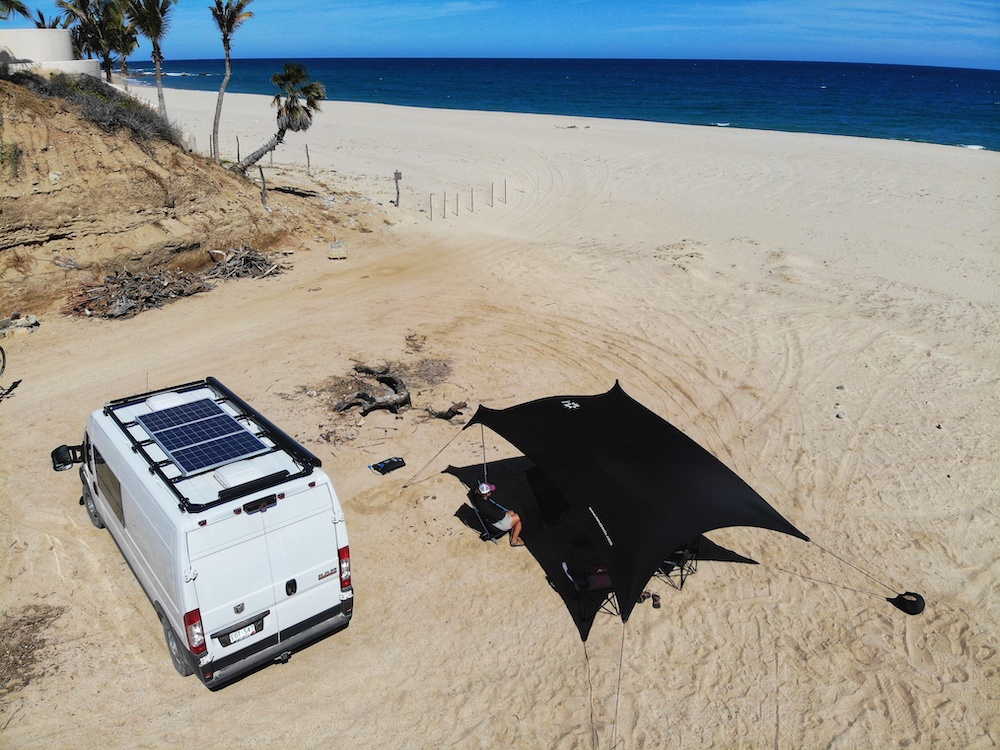
Used vans are typically more affordable compared to new, but then you might get stuck with someone else’s interior build and possible mechanical problems due to neglect to the vehicle. With something new, you lose equity value the minute you drive it off the lot, which feels like a huge waste of money, but you have a completely blank slate to customize the van however you want and a warranty for peace of mind. The perfect balance is to take your time and find a good deal on something slightly used, but that may not always work out. Ultimately, the make and model that we chose contributed to our decision to buy a new van.
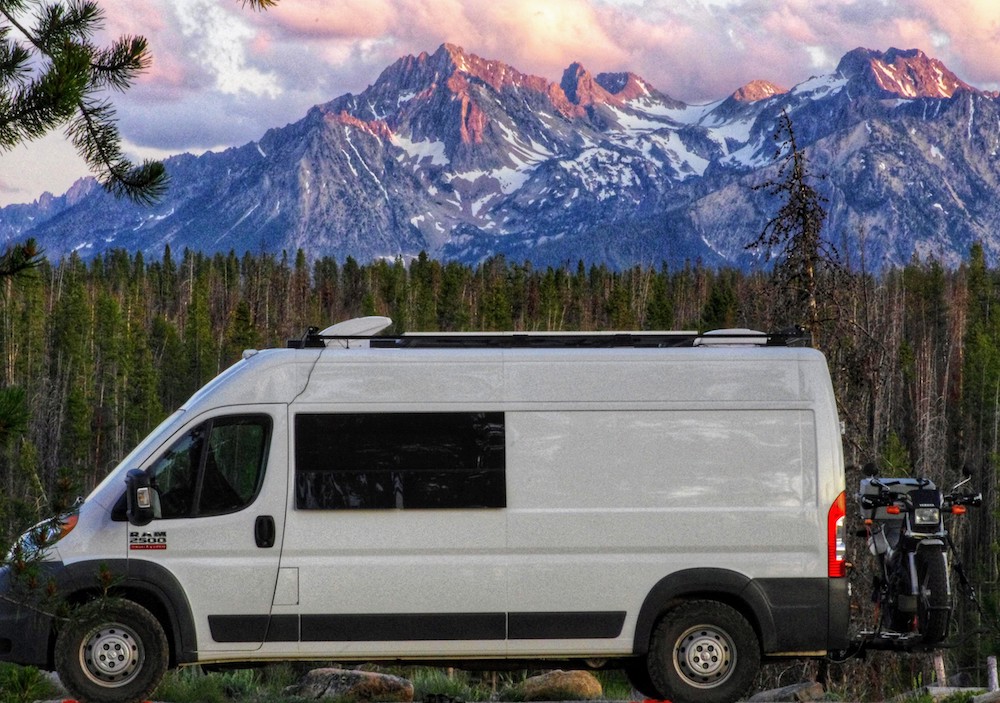
The Big Three: Ford, Mercedes & Dodge Ram
Most people’s vans are a direct reflection of their lifestyle. If you need 4×4 and high clearance to access the places you want to go, that will narrow your options pretty quickly. If you have a lot of hobbies like us, you will need a lot of storage space for gear. Due to their limited size, vans like VW Vanagons, Westfalias, and Syncros were eliminated from our shortlist early in the Research Phase. The Mercedes Sprinter, Ford Transit, and Dodge Ram Promaster are the Big Three van options available that fit our storage needs. This is where a spreadsheet helps a lot!
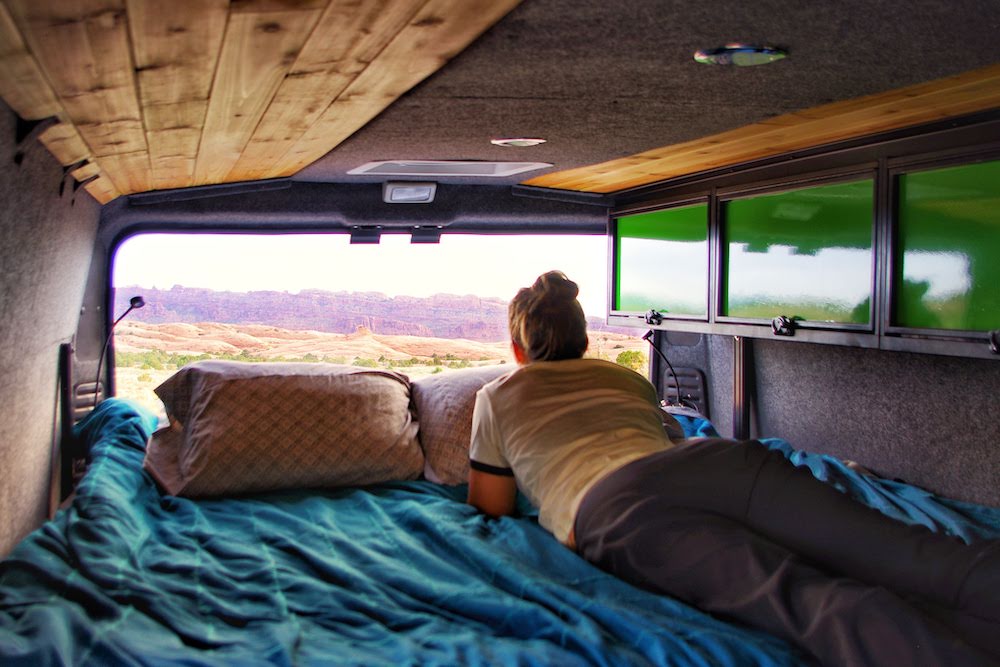
We cataloged interior dimensions, exterior dimensions, features, costs and all other relevant factors in Excel for a good side-by-side comparison. After test-driving them all, and then test-driving them again, we liked the Mercedes Sprinter and Ram Promaster the best. The driver’s area in the Ford is very comfortable and feels similar to a car, but we didn’t like the handling as much as the other two. The feature-rich Mercedes felt great to drive with a price-point to match and the Promaster was an affordable, bare-bones cargo van that we could build it from the ground up.
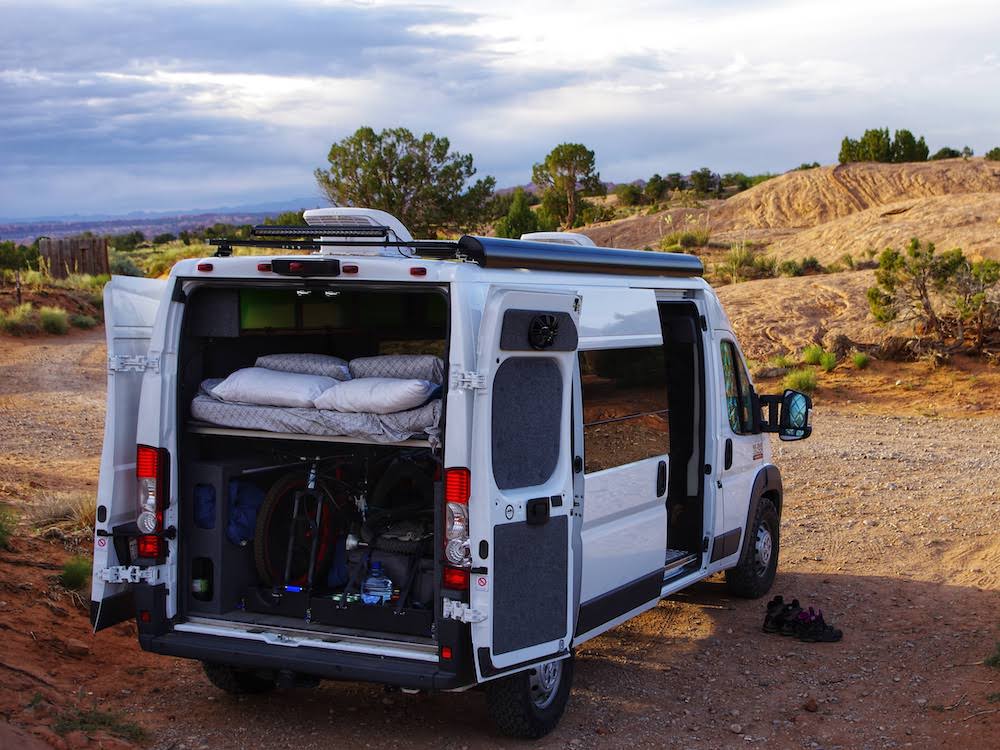
Debating Fossil Fuels
Because the Sprinter is diesel and the Promaster is gas, the next logical step was to make a decision about gas vs. diesel. We knew that we would be traveling in Mexico and know of people having issues with modern diesel engines and the lack of good quality diesel there. The Mercedes Sprinter vans have a proven track record of being reliable vans. However, when they do breakdown, the costs of maintenance and labor on a foreign, diesel vehicle is more expensive than a domestic gas vehicle. With additional restrictions on diesel vehicles such as DEF, taking a diesel engine into the shop can be a big hit to the bank account, and finding a shop to work on it might be difficult as well.

Every van-owner’s experience will be different, but we found several cost comparison charts online that show costs of owning gas versus diesel vehicles over time, including parts and labor. We liked the fact that the Promaster uses the same motor as the Dodge Ram 1500 truck and the Jeep Wrangler, meaning most mechanics could work on it and replacement parts would be easy to find.
In the end, we decided we wanted a gas engine and decided to buy a new Ram Promaster.
Since they did not start making the Promaster until 2014, used vans that are in good condition were virtually impossible to find when we were shopping in 2017. This factor pushed us into purchasing a new van. We bought a Promaster with the 159-inch wheelbase and high roof. Due to its box-like shape and the built-in over-cab storage compartment, it has the most interior capacity, with lots of room for our gear. Almost two years later, we’re still incredibly happy with our decision!
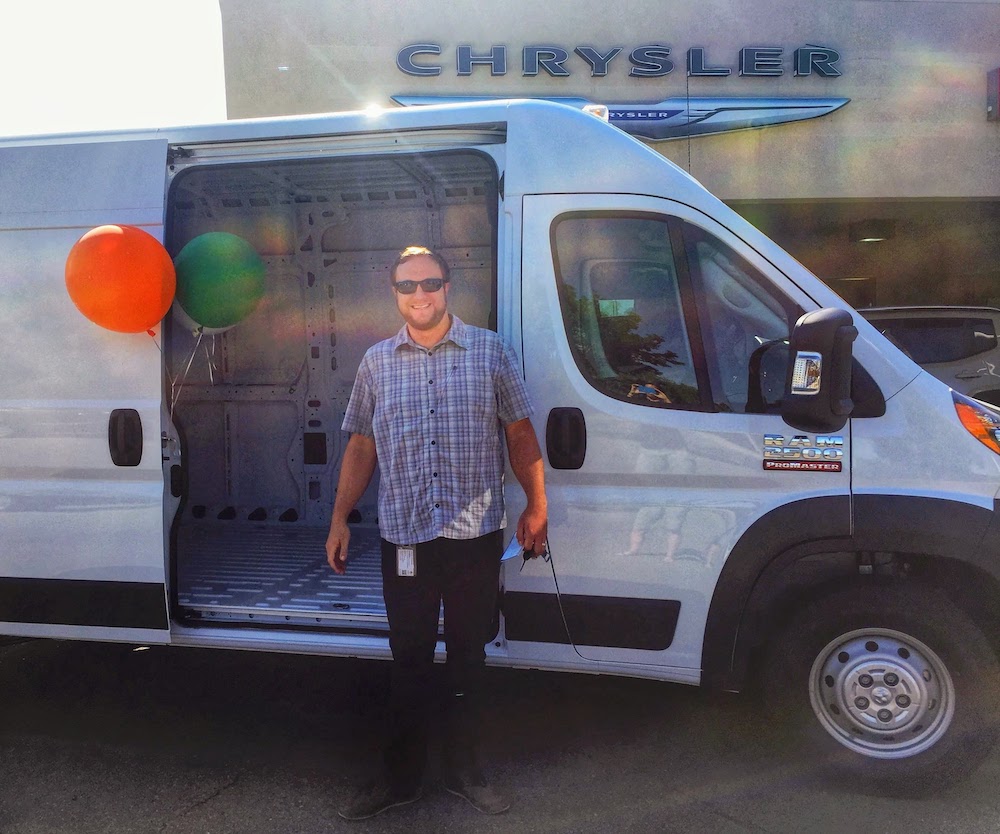
No matter how you choose your new van for your upcoming adventures, it’s important to consider your lifestyle and your budget first! It’s easy to get swept away in the details of the conversion itself, how you’ll customize your build and the places you’ll go. The key factors that determine your future happiness are less exciting, but much more significant! We’re looking forward to seeing you on the open road! Happy Van Shopping!

After you choose your new van, make you have proper van/RV insurance for your new home on wheels! Check out the ultimate guide to RV insurance in 2020 here!



